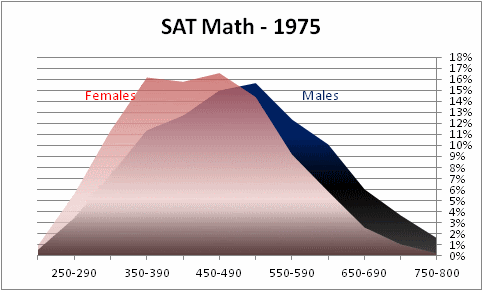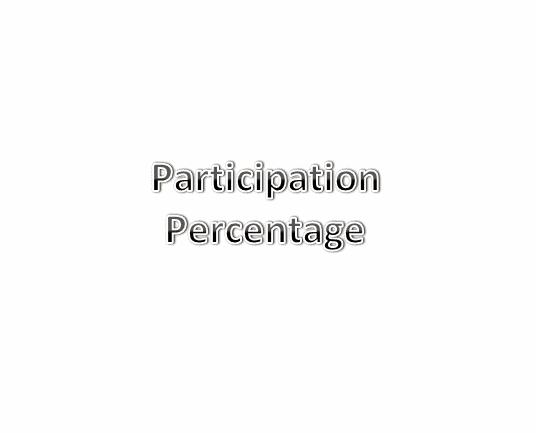“It’s estimated that a third of all men carry what’s been called the warrior gene.”
— Dr. Phil
“There were three genes, as you mentioned. Call them violence genes. Call them bad-behavior genes. But what they found was that if people had these genes, they’re much more likely to be violent. There were certain triggers, as well: stress, family problems, low popularity, failing in school. To take it a step further, Karen, they sort of predict that about one percent of the population has these genes.”
— Dr. Sanjay Gupta, CNN
Both of these men are wrong, and both are referring to the same gene, monoamine oxidase A (MAOA). Roughly a third of white men inherit the 3-repeat allele of MAOA (MAOA-3R), which has received considerable research attention for influencing aggression. However, every other group, particularly African Americans, reach much higher allele frequencies, making MAOA-3R the most common version of the gene. Gupta was referring to a study of three potential violence-causing genes. One was the heterozygous pairing of ANKK1’s Taq1A allele (once thought to belong to DRD2), found in 37% of the subjects. Another was DAT1’s 10-repeat allele, found in 95% of the subjects. However, the strongest association with violence occurred in the third gene, MAOA, specifically the 2-repeat allele (MAOA-2R) found in that one percent that Gupta mentioned. I previously documented how this especially violent version of “the warrior gene” can be found much more commonly in African-American men than white or Asian men. Recently, an unusual study filled in some knowledge gaps about this highly understudied allele, specifically its effect on African-American men.
One unusual aspect of this study, Beaver et al, is that it essentially reexamined the exact same data as Guo et al, the study Gupta mentioned. The latter actually coincided with another study, also led by Guang Guo, on MAOA-2R in 2008 that determined that the allele doubles the rate of serious and violent delinquency. The impact most affected those aged twelve to fifteen, more than tripling the violent delinquency score based on eight questions. All three papers obtained their data from the National Longitudinal Study of Adolescent Health that totaled about 20,000 participants. However, only a seventh of that sample provided DNA, and Beaver et al focused on as few as eight black men for some of its findings.
That number might induce a healthy skepticism, but one should recall that this is not some newly discovered point mutation obtained in a “fishing expedition” bound for the annals of false positives. This gene produces an extremely important neurotransmitter enzyme that became the target of the first antidepressants in the 1950s. In the 1970s, studies linked its metabolites to aggression. In the late 80s, Hans Brunner discovered and became the eponym for a syndrome of violence resultant from complete deactivation of MAOA. His initial study included only five instances out of a family history of fourteen possible cases. Follow-up research increased the total subjects to nine from this single family. However, other researchers were able to induce Brunner syndrome in mice and eventually to discover such knockout-allele mice in a spontaneous form. Of course, a 2002 study instigated a tremendous amount of research on the gene-environment interaction, in which MAOA-3R coupled with the experience of child abuse triggers aggressive tendencies. The number of the “repeats” in the allele refers to the length of the more studied of the two promoters of the gene, and so those repeats can represent, to some extent, discrete levels of the enzyme’s dosage. In fact, the Guo et al 2008 study in the European Journal of Human Genetics included an in-vitro functional analysis of MAOA in human brain-tumor cells. MAOA-2R was less active than MAOA-3R, which was less active than MAOA-4R, the most common version in white people. MAOA-4R was more than three times as active as MAOA-2R.
I shall now briefly detail the sample characteristics that each of the three studies examined in order to ascertain how common MAOA-2R is in white and African-American men. Beaver et al claimed that the overall sample consisted of 2574 individuals, though Guo et al claimed a sample of 2524, including 1200 men. If Beaver et al was in error, then they have consistently repeated the error in other papers. In American Sociological Review, Guo et al only included 1111 men who met that study’s requirements, but both 2008 papers show that only eleven men had the 2R allele, and this study actually provided a racial breakdown of the sample: 60% white, 17% African American, 15% Hispanic American, and 8% Asian. The full genotyped Add Health male population is 57% white, which is 680 men. Beaver et al has listed 174 African-American men. Thus, nine black men by interviewer-assessed race (5.2%) or ten by self-reported race (5.5%) had the 2R allele. Beaver et al revealed that only 0.1% of white males had the 2R allele, which would equal just one man out of 680. That probably leaves none for Asians and Hispanics.
These numbers roughly correspond to other studies but suggest that I might have been too generous to African-American men in suggesting that they are only ten times more likely to have this especially dangerous version of MAOA. Reti et al previously genotyped a sample of 618 men and women who were 59% white and 38% African American. That study did not use a purely random sample. Seventy-five percent of that group received psychiatric evaluation within the Hopkins Epidemiology of Personality Disorders Study. That sample included 224 men and 391 women (with apparently three individuals missing possibly from rounding). Assuming both the black people and white people are 64% female, only three alleles out of 595 would have been 2-repeat alleles for white people. Eighteen of 377 would have been 2R for black people. Only about one white man out of possibly 133 would have been likely to have it, if even that, compared to four out of 85 black men. Likewise, Caspi et al in 2002 found one man with the 2R allele out of 499 white males. The trend seems to be that only a token white man in each study has this rare allele. Therefore, to say that the prevalence in whites is higher than Asians is sketchy. Since the new Beaver et al study uses a more random sample than Reti et al, and its white-male 2R prevalence is in closer agreement with Caspi et al than Reti et al, I suspect that this allele is closer to 50 times more common in black men than white men rather than 10 times, as I previously wrote.
Most research on MAOA compares MAOA-3R to MAOA-4R in white males with token instances of MAOA-2R thrown in with MAOA-3R under the label “MAOA-L.” So, these studies are made more shocking by the lumping of “the warrior gene,” MAOA-3R, together with the high-activity allele, MAOA-4R, as the non-violent versions of the gene. The astounding results speak for themselves. Beaver et al found that the ten black men who possessed MAOA-2R had triple the risk of incarceration and almost quadruple their risk of arrest, (accounting for 8.6% of the arrested and 9.5% of the incarcerated). A sample of only eight black men with MAOA-2R out of 130 black men had a statistically significant increased risk of self-reported violence. Scientists have tried to ameliorate the politically unpalatable nature of violence-gene research by emphasizing the environmental trigger for aggression with MAOA-3R, but the findings of Beaver et al and Guo et al did not depend on any environmental trigger. Beaver et al asserted that “the low base-rate of 2-repeat allele carriers prevented an exploration of gene-environment interaction…” However, Guo et al went right ahead and also tested for an interaction between MAOA-2R and being held back a grade in school and three questions regarding feelings of school attachment. The gene’s interaction increased violent delinquency 21 times as much as grade retention alone and seven times as much as school attachment alone.
Given that the men with MAOA-2R in the National Longitudinal Study of Adolescent Health are ten African Americans and one white, I doubt the effectiveness of the regression analysis adjustment for race and ethnicity claimed by Guo et al. Put another way, 91% of the exposed cohort come from a racial group that is 13% of all Americans. Their studies should have laid bare this fact. Beaver et al limited their analysis to the black men, but even that raises concerns of population stratification because African Americans are a mixed population, averaging 22% European ancestry. Africa, itself, has produced no MAOA research, (but it did copy a sensational National Geographic documentary on MAOA). If MAOA-2R is so closely associated with African ancestry, then it could serve as a proxy for having more African alleles. Of course, this logic never stopped any of the other research on African Americans, and the implication that multiple other African violence alleles confound this association does not fit the mold of politically correct impugnment usually directed at MAOA research.
Part of my fascination with the sparse research on MAOA-2R comes from my belief that scientists have inadvertently underplayed the true power of this gene. Comparing the two most common versions of MAOA requires less effort and funding, and emphasizing an environmental trigger, like child abuse, varnishes genetics research with a politically correct gloss. However, the trigger for MAOA-3R quickly multiplied to include testosterone levels, maternal smoking, IQ, education, and socio-economic status. Some of those “environmental” factors actually have a dominant hereditary influence. Now, studies have triggered aggression in MAOA-3R men with much more immediate experimental adversities in the form of game unfairness. Furthermore, people like Dr. Phil assume that a gene-environment interaction is synonymous with a “genetic predisposition,” but the “non-active” allele actually appears to play a protective role that negates an environmental trigger’s impact. For instance, low IQ does not increase violent tendencies in men with MAOA-4R, but it does in men with MAOA-3R.
Incidentally, Steven Pinker’s latest book addressed the Flynn Effect. “If smarter people and smarter societies are less likely to be violent, then perhaps the recent rise in intelligence can help explain the recent decline of violence.” However, a hypothesis of much longer-term IQ decline has recently ridden a wave of genetic-load angst, so allow me to point out the tension between these competing paradigms as a challenge to Pinker’s broader thesis. The complex associations between intelligence, executive function, and aggression might have also drawn in olfaction research. Both judgment and the ability to discern smells localize to the frontal lobes, and research has linked poor olfactory acuity to aggression. As with MAOA allele frequencies, racial disparities exist for odor identification.
Since Brunner syndrome and MAOA-2R seem to have a “main effect” without an environmental trigger, I see the MAOA-3R gene-environment interaction as a penumbra of the possible enzymatic effects. In an entire population, the prevalence of violence must have a specific total MAOA component that would consist of all of the MAOA variants (including potential epigenetic effects, SNPs, and both VNTR promoters, only one of which is the subject of most “warrior gene” research) and each variant’s potential when unlocked by all possible environmental triggers. Even with enormous samples, whole-genome studies are capable of studying a tiny fraction of this genetic potential. Similarly, quantitative genetics research, like twins studies, underestimates heritability when some large genetic effects are unlocked by environmental stimuli, as opposed to a merely additive nature-nurture relationship. Terrie Moffitt and Avshalom Caspi, who spearheaded early gene-environment research, wrote an extended analysis of this approach with Michael Rutter. “For understanding the influence of such conditional-effect genes, large samples may be less necessary than strategic [gene-environment interaction] research.”
Rather than use the penumbra of gene-environment interactions to appreciate the extensiveness of a gene’s effect, scientists like Moffitt, Caspi, and Rutter seek to dispel genetic “determinism.” Citing a two-hour student protest of a scientific conference on the genetics of violence, they explained, “Ethicists attribute the root of the public’s concern about genes to a pervasive belief in the power of genetic determinism: ‘ … genetic determinism implies that knowing a person’s genetic makeup is tantamount to knowing his or her future.’” If the public detests genetic determinism due to its unyielding quality, then surely such people would rather seek methods to circumnavigate genetic fate than to simply disacknowledge the power of heredity. However, Moffitt et al wish for the opposite: “Concrete data needed to counter genetic determinism are provided by new [gene-environment interaction] findings…. Such understanding should make eugenics and other misuses of genetic information much more difficult.” This discussion calls for a debate over both the feasibility and the ethics of changes to environmental triggers, like poverty, versus those of the ill-defined “misuses” of genetic knowledge. Presumably hypothetical therapeutic drugs and diagnostic tests for violent tendencies would not necessarily misuse the research, and the solutions to poverty and educational failure are not just around the corner.
Obviously, many scientists and activists who oppose genetic determinism believe in a greater role for nurture or even blank-slate nurture determinism, but they wish to leverage the masses, who ascribe behavior to supernatural “free will.” To qualify as deterministic, must genetic aggressivity present itself constantly? Though MAOA has no activity in Brunner syndrome, the subjects need not reside in cages, gnawing on the bars. Most men with the MAOA knockout allele are afflicted with conduct disorder and “conflict with the law” during their lifetime. A provocation of some sort might set off aggression, but minor provocations exist in the lives of all people, so Brunner syndrome should still qualify as deterministic. Whether the existence of such determinism is “nice” or not has no bearing on its existence, so do not mistake denial for virtue.
I might have missed the recent Beaver et al study, if others had not pointed it out to me. Unlike most MAOA research, it did not surface in the PubMed database. I think that is true of all studies from the Journal of Personality and Individual Differences of the London School of Differential Psychology. Some of the journal’s board members, including recently deceased Arthur Jensen, received the label “scientific racist” from certain activists. So, Kevin Beaver refused to submit to an interview for this blog, but he saw fit to publish in a journal that recently reviewed research on penis length and circumference differences among “Negroids,” “Caucasoids,” and “Mongoloids.” A year ago, I was able to send him a list of questions, in which I confronted him for conflating MAOA-2R and MAOA-3R as “MAOA-L.” He told me that a study on MAOA-2R was “in the pipeline.” However, I would like to think that I inspired the study, and I find it jarring that four years could pass without any research on MAOA-2R and violence.
Is anyone following this research as well as I am? Many professions fight “turf wars.” This occurs among medical professionals and physician specialties. Study of MAOA and violence likens less to competition over a lucrative procedure and more to a game of “hot potato.” Violence, itself, does not have a dedicated category in the Diagnostic and Statistical Manual of Mental Disorders. Though psychiatrists have contributed some research, it seems that psychologists and criminologists like Beaver have taken the lead usually with low-cost data mining from databases like the National Longitudinal Study of Adolescent Health.
Meanwhile, public attention to the gene increasingly falls to self-appointed experts and “ethicists,” who cannot even report some very basic facts about the gene correctly. Pseudointellectuals are claiming that “most if not all of this literature [on MAOA] is wrong, and [sic] will soon be forgotten” and that a “single molecule” like serotonin or dopamine cannot explain “complex behavior.” When Scientologists mouth these stupid ideas, most people roll their eyes, but now the same ideas are coming from “science reporters” and Harvard professors. Therefore, I decided to take the drastic measure of addressing what I think might be the source of the problem by editing Wikipedia. Before I started editing the Wikipedia pages for Brunner syndrome and MAOA, activists had peppered them with qualifications that the evidence was “flawed” or “controversial” or that the emerging field of epigenetics made the gene’s effects “hard to predict.” Apparently, methyl moieties escape the rule that a single type of molecule cannot determine a complex behavior. Never mind studies that show the epigenetics of MAOA in men is minimal, low in variance, and high in hereditary influence. Of course, it is never enough to simply edit a fix into a Wikipedia page. First, one makes the edit. Then, one reapplies the edit repeatedly after activists try to undo one’s work. Finally, one replies to the activist on one’s personal “talk” page when the activist threatens to undo one’s work again unless one attaches to an email the study that proves the activist’s sacred belief is based on a copy-and-paste error. A stronger commitment predicates some Wikipedia myths than that of many a marriage.
Some are rightfully criticizing this research and candidate-gene behavioral genetics, in general, because small sample sizes can cause false positives by measure of statistical significance. However, since no other approach is capable of studying VNTRs like MAOA, the only current solution would be to fund the research more rather than to advocate censorship of the research that is being done. Rarely do I hear similar criticism of functional magnetic resonance imaging (fMRI) research, which tends to have small samples due to the expense of the imaging but makes up for it with pretty color explosions on brain maps. When I worked with fMRI, I thought that the arbitrary threshold settings that defined the “areas of increased activity” added an extra layer of bias. Perhaps the Harvard establishment has singled out behavioral genetics for rebuke in order to centralize the potential for offensive findings and to avoid “misuse.”
The study of MAOA has received a beautiful gift—the gift of cancer. One might recall the fad cureall and supplier of immortality known as antioxidants. Antioxidants are supposed to save cells by counteracting free radicals. However, too much of a good thing like cell survival is cancer. MAOA deserves to be called the “warrior gene” because it makes oxidases that slay cancer cells. Malorni et al first discovered this in 1998 when the MAOA-inhibiting drug, clorgyline, saved melanoma cells, in vitro. Ten years later, Alpini et al concluded that epigenetic effects on the MAOA VNTR could explain its lower enzyme levels in cholangiocarcinoma, cancer of the liver bile ducts. Now, Huang et al has determined that higher MAOA expression decreased the risk of metastasis and improved prognosis and survival in patients with cholangiocarcinoma. Though the decline in MAOA expression seemed mostly limited to the areas of malignancy, I have found some online family-member portrayals of men with the disease becoming “distant,” “difficult,” “angry,” “grumpy,” “horrible,” and “mean,” in some cases prior to diagnosis.
This calls for drugs that increase MAOA levels, and maybe the resulting therapies could metastasize to psychiatric uses. A few contestants already have records of accomplishment. Doctors sometimes use risperidone, an older-generation antipsychotic, to treat impulsive aggression. In fact, Tuinier et al detailed a case report of a Brunner syndrome patient who successfully responded for a time to risperidone. Nevertheless, the drug has serious adverse reactions, causing many patients to gain weight, and a small percentage develop permanent tardive dyskinesia, involuntary movements often of the lips. Tetrabenazine and ketanserin reduced aggression in MAOA-knockout mice. Tetrabenazine is used to treat chorea, the involuntary movements of Huntington’s disease. The FDA granted it official orphan-drug status in 2008, but it is incredibly expensive for Americans to use. Ketanserin has applications for high blood pressure, but it is unavailable in the US.
Maybe this cancer research could save MAOA from its “controversial” reputation. Harvard professors might hesitate to dismiss a violence gene that became a cancer gene. After all, lives are at stake.
Alpini G, Invernizzi P, Gaudio E, Venter J, Kopriva S, Bernuzzi F, Onori P, Franchitto A, Coufal M, Frampton G, Alvaro D, Lee SP, Marzioni M, Benedetti A, & DeMorrow S (2008). Serotonin metabolism is dysregulated in cholangiocarcinoma, which has implications for tumor growth. Cancer research, 68 (22), 9184-93 PMID: 19010890
Beaver, K., Wright, J., Boutwell, B., Barnes, J., DeLisi, M., & Vaughn, M. (2013). Exploring the association between the 2-repeat allele of the MAOA gene promoter polymorphism and psychopathic personality traits, arrests, incarceration, and lifetime antisocial behavior Personality and Individual Differences, 54 (2), 164-168 DOI: 10.1016/j.paid.2012.08.014
Brunner HG, Nelen MR, van Zandvoort P, Abeling NG, van Gennip AH, Wolters EC, Kuiper MA, Ropers HH, & van Oost BA (1993). X-linked borderline mental retardation with prominent behavioral disturbance: phenotype, genetic localization, and evidence for disturbed monoamine metabolism. American journal of human genetics, 52 (6), 1032-9 PMID: 8503438
Cases O, Seif I, Grimsby J, Gaspar P, Chen K, Pournin S, Müller U, Aguet M, Babinet C, & Shih JC (1995). Aggressive behavior and altered amounts of brain serotonin and norepinephrine in mice lacking MAOA. Science (New York, N.Y.), 268 (5218), 1763-6 PMID: 7792602
Caspi A, McClay J, Moffitt TE, Mill J, Martin J, Craig IW, Taylor A, & Poulton R (2002). Role of genotype in the cycle of violence in maltreated children. Science (New York, N.Y.), 297 (5582), 851-4 PMID: 12161658
Crabtree, G. (2013). Our fragile intellect. Part II Trends in Genetics, 29 (1), 3-5 DOI: 10.1016/j.tig.2012.10.003
Fergusson DM, Boden JM, Horwood LJ, Miller A, & Kennedy MA (2012). Moderating role of the MAOA genotype in antisocial behaviour. The British journal of psychiatry : the journal of mental science, 200 (2), 116-23 PMID: 22297589
Gallardo-Pujol D, Andrés-Pueyo A, & Maydeu-Olivares A (2012). MAOA genotype, social exclusion and aggression: an experimental test of a gene-environment interaction. Genes, brain, and behavior PMID: 23067570
Guo, G., Roettger, M., & Cai, T. (2008). The Integration of Genetic Propensities into Social-Control Models of Delinquency and Violence among Male Youths American Sociological Review, 73 (4), 543-568 DOI: 10.1177/000312240807300402
Guo, G., Ou, X., Roettger, M., & Shih, J. (2008). The VNTR 2 repeat in MAOA and delinquent behavior in adolescence and young adulthood: associations and MAOA promoter activity European Journal of Human Genetics, 16 (5), 626-634 DOI: 10.1038/sj.ejhg.5201999
Huang L, Frampton G, Rao A, Zhang KS, Chen W, Lai JM, Yin XY, Walker K, Culbreath B, Leyva-Illades D, Quinn M, McMillin M, Bradley M, Liang LJ, & DeMorrow S (2012). Monoamine oxidase A expression is suppressed in human cholangiocarcinoma via coordinated epigenetic and IL-6-driven events. Laboratory investigation; a journal of technical methods and pathology, 92 (10), 1451-60 PMID: 22906985
Jones, R., Brown, C., & Ship, J. (1995). Odor identification in young and elderly African-Americans and Caucasians Special Care in Dentistry, 15 (4), 138-143 DOI: 10.1111/j.1754-4505.1995.tb00501.x
Mahmut, M., & Stevenson, R. (2012). Olfactory Abilities and Psychopathy: Higher Psychopathy Scores Are Associated with Poorer Odor Discrimination and Identification Chemosensory Perception, 5 (3-4), 300-307 DOI: 10.1007/s12078-012-9135-7
Malorni W, Giammarioli AM, Matarrese P, Pietrangeli P, Agostinelli E, Ciaccio A, Grassilli E, & Mondovi B (1998). Protection against apoptosis by monoamine oxidase A inhibitors. FEBS letters, 426 (1), 155-9 PMID: 9598998
McDermott R, Tingley D, Cowden J, Frazzetto G, & Johnson DD (2009). Monoamine oxidase A gene (MAOA) predicts behavioral aggression following provocation. Proceedings of the National Academy of Sciences of the United States of America, 106 (7), 2118-23 PMID: 19168625
Moffitt, T., Caspi, A., & Rutter, M. (2006). Measured Gene-Environment Interactions in Psychopathology. Concepts, Research Strategies, and Implications for Research, Intervention, and Public Understanding of Genetics Perspectives on Psychological Science, 1 (1), 5-27 DOI: 10.1111/j.1745-6916.2006.00002.x
Murphy SM, Puwanant A, Griggs RC, & Consortium for Clinical Investigations of Neurological Channelopathies (CINCH) and Inherited Neuropathies Consortium (INC) Consortia of the Rare Disease Clinical Research Network (2012). Unintended effects of orphan product designation for rare neurological diseases. Annals of neurology, 72 (4), 481-90 PMID: 23109143
Pietrangeli, P. (2004). Amine Oxidases and Tumors NeuroToxicology, 25 (1-2), 317-324 DOI: 10.1016/S0161-813X(03)00109-8
Reti IM, Xu JZ, Yanofski J, McKibben J, Uhart M, Cheng YJ, Zandi P, Bienvenu OJ, Samuels J, Willour V, Kasch-Semenza L, Costa P, Bandeen-Roche K, Eaton WW, & Nestadt G (2011). Monoamine oxidase A regulates antisocial personality in whites with no history of physical abuse. Comprehensive psychiatry, 52 (2), 188-94 PMID: 21295226
Roush, W. (1995). Conflict marks crime conference Science, 269 (5232), 1808-1809 DOI: 10.1126/science.7569909
Scott, A., Bortolato, M., Chen, K., & Shih, J. (2008). Novel monoamine oxidase A knock out mice with human-like spontaneous mutation NeuroReport, 19 (7), 739-743 DOI: 10.1097/WNR.0b013e3282fd6e88
Shih JC, Ridd MJ, Chen K, Meehan WP, Kung MP, Seif I, & De Maeyer E (1999). Ketanserin and tetrabenazine abolish aggression in mice lacking monoamine oxidase A. Brain research, 835 (2), 104-12 PMID: 10415365
Sjöberg, R., Ducci, F., Barr, C., Newman, T., Dell'Osso, L., Virkkunen, M., & Goldman, D. (2007). A Non-Additive Interaction of a Functional MAO-A VNTR and Testosterone Predicts Antisocial Behavior Neuropsychopharmacology, 33 (2), 425-430 DOI: 10.1038/sj.npp.1301417
Tuinier S, Verhoeven WMA, Scherders MJWT, Fekkes D, & Pepplinkhuizen L (1995). Neuropsychiatric and biological characteristics of X-linked MAOA deficiency syndrome: A single-intervention case study. New Trends in Experimental and Clinical Psychiatry, 11 (4), 99-107
Wong CC, Caspi A, Williams B, Craig IW, Houts R, Ambler A, Moffitt TE, & Mill J (2010). A longitudinal study of epigenetic variation in twins. Epigenetics : official journal of the DNA Methylation Society, 5 (6), 516-26 PMID: 20505345



































































